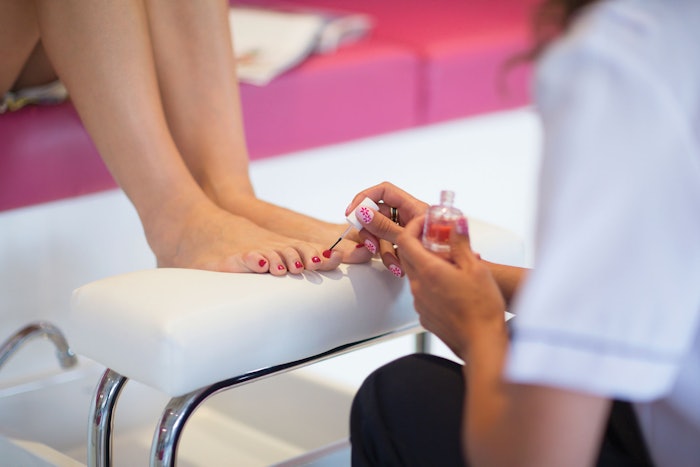
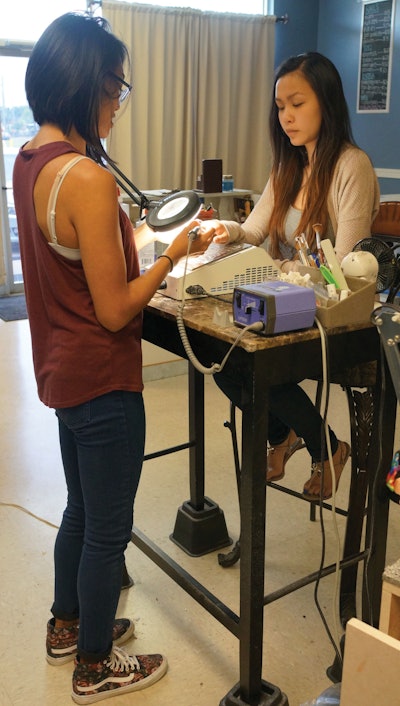
In the salon, ergonomics usually refers to manicure and pedicure service positioning that benefits the body’s natural movement patterns. Pedicure stations are perhaps the most obvious ergonomic culprits, says Chris Mans, owner of Jeweled Nails in Lake Forest, California, as most call for techs to hunch over clients’ feet—bad news for lower backs. “But manicure tables, where techs hold clients’ wrists at odd angles for long workdays, are just as important to consider,” he says.
Mans and several other pros have taken steps to safeguard their employees and, as a result, have also boosted operational efficiency. “Ergonomic work environments result in improved productivity, reduced sick days and a profoundly positive impact on employees’ state of mind,” says Bryce Rutter, Ph.D., a specialist in ergonomic product design and CEO and founder of Metaphase Design Group in St. Louis, Missouri. Here, a look how implementing ergonomics is affecting techs across the country.
A Handier Mani
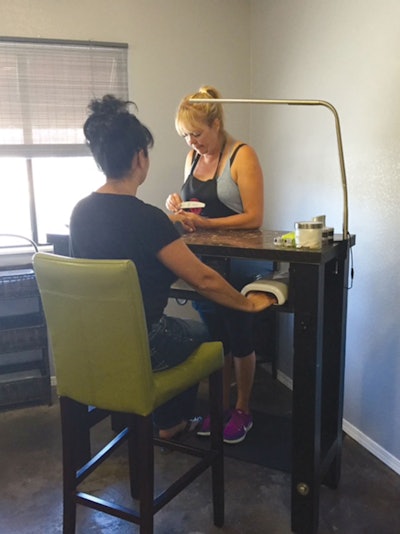
Because Collier didn’t like standing on the hard trade show floor, she equipped her own station with an anti-fatigue mat underfoot and invested in bar stools for her clients. “I still keep a sit-down station for elderly clients, but it’s also built specially for my height, so I can rest my forearms on the table while holding onto clients’ fingers,” she says. Collier explains that traditional manicure tables are often too wide, meaning techs end up sitting on their feet or pillows to reach across and grab the client’s hand—an ergonomic no-no. “My table is only 18 inches deep, which is perfect for me to grip clients’ fingers,reach everything I need, and save my hands from tendonitis and carpal tunnel,” she says.
Fifteen years into the nail business, Sherry Le and her cousin, Hai Nguyen, co-owners of T&K Nails in Birmingham, Alabama, also quit sitting, cold turkey. “I was tired of hunching over and straining my body to accommodate my vision, wrist and position of my neck,” says Le. “I also suffered headaches caused by straining and invested in massages in hopes of relieving the tension in my shoulders” Earlier this year, she and Nguyen traded in their traditional chairs for two kneeling chairs, designed to relieve pressure on the lower back, as well as two standing desks (which also offer a kneeling position).
Ever since, Le has spent eight hours a day, six days a week, standing upright. She also equipped her personal standing station with a lamp with a magnifying lens. “I can see more clearly without having to stick my neck out,” says Le, adding that she now has better stamina and that her legs are stronger than every before. “I’ve lost 15 pounds, too!” Additionally, Le says that her shoulder no longer look for feel as rounded, and that as a result, she can breathe better and deeper. “This improves my thinking and stress management, meaning my days in the salon are better overall,” she says. A secondary benefit? “A standing desk,” notes Le, “serves as a great conversation starter to break the ice with new clients!”
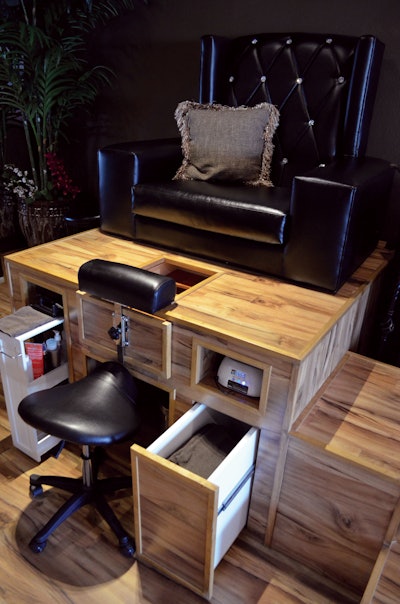
Experts are in agreement: Separate mani/pedi stations allow techs to perform each service more efficiently. Traditional pedi stations typically seat techs in front of the client, with their knees higher than their hips. “When the tech leans over to reach fro the feet, all of the stress goes into the small of her back,” says Janet McCormick, industry consultant and co-owner of Fort Meyers, Florida-based Nailcare Academy. “I advise techs to put thrones on a platform and adjust their own seats so as to keep clients’ feet above their knees.” McCormick adds that this renders the setup more ergonomic not only for the tech, but also for the guest.
At Los Angeles’s Burke Williams Day Spas, nail care director Michelle Orozco revamped training protocols to focus on techs’ body mechanics and added a body mechanics massage protocol, which serves to address clients’ hand and foot pain. She also equipped salons with pedicure thrones that are positioned higher than most, with a technician stool that can adjust from 13 to 17 inches. Orozco explains that this allows techs to bring the foot to their eye level for a more precise polish application, sans hunching. “Seventy percent of our techs have been part of our work family for more than five years, without injury and/or pain,” she says. “And since we started using the chairs, client satisfaction has been at an all-time high.” Mans has not only raised his salon’s pedi units 3 feet off the ground, allowing clients’ legs to bend at a natural 45-degree angle, but he’s equipped all stations with saddle seats for techs. “They can be adjusted in height for each tech and they’re designed to support the back,” he explains.
Mike Ahn, senior sales director of J&A USA, notes that some employers, such as resort salon/spas, end up having to pay out, insurance-wise, because of employees’ enduring back problems. It’s part of why his company started developing pedi thrones that boast higher footrests. “They can be raised up to 10 inches, with settings for various heights.”
Strike A Pose
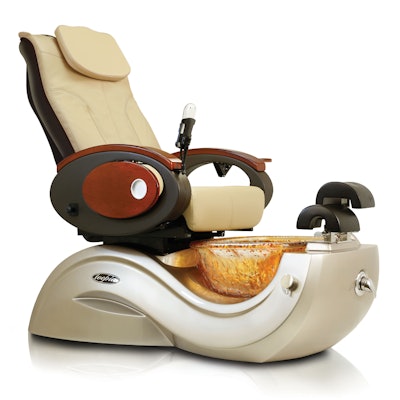
When performing manis, techs should keep their backs straight and supported, and raise hands so as to avoid hunching over them. During pedis, it’s important to avoid bearing the weight of a client’s leg by resting her foot in your lap. “Rather, adjust feet and legs using a weight-bearing footrest, or ask guests to move their knees and feet to appropriate positions,” says Ahn. This limits the pressure on techs’ backs, shoulders and neck, and affords greater mobility as they progress through a service.
Techs also tend to “perch” on the ends of their seats, which doesn’t do any favors for the lower back and leads to muscle fatigue. “Sit back fully in the chair to reap the benefits of lumbar support,” says Rutter. “If you keep sitting forward, find a chair that fits you better or affords a more maneuverable position.”
— Katie O’Reilly
[Images: Getty Images/Echo/Cultura; Courtesy of Sherry Le; Courtesy of Carla Collier; Courtesy of Chris Mans; Courtesy of J&A USA]











